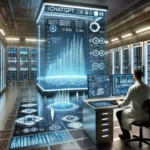Understanding the Silent Killer: Stroke
The Two Main Types of Strokes
Imagine your brain as a bustling city, with blood vessels serving as the arteries that keep it alive. When these arteries are blocked or burst, the city faces a crisis – this is what we call stroke. There are two main types: ischemic and hemorrhagic.
Ischemic Stroke
Ischemic strokes occur when blood flow to part of the brain is cut off due to a clot (thrombosis) or an embolus (a piece of debris that travels from elsewhere in the body). Think of it as a traffic jam on your city’s main road, cutting off vital supplies. This can lead to cell death and impaired function.
Hemorrhagic Stroke
On the other hand, hemorrhagic strokes happen when blood vessels burst or leak into the brain tissue. Imagine a pipe in your city bursting, flooding the streets with water – this is akin to blood leaking into the brain’s tissues, causing damage and pressure.
Symptoms: The Silent Warning Signs
Recognizing stroke symptoms early can be a matter of life or death. Common signs include sudden numbness or weakness on one side of the body, confusion, trouble speaking, dizziness, vision problems, and severe headache with no known cause.
The FAST Test: A Quick Check
Remember the FAST test? It stands for Face drooping, Arm weakness, Speech difficulty, and Time to call emergency services. If you or someone else shows any of these signs, it’s time to act fast.
Risk Factors: What Increases Your Risk?
High blood pressure is the biggest culprit, followed by high cholesterol, smoking, obesity, diabetes, TIA (transient ischemic attack), kidney disease, and atrial fibrillation. These risk factors can be managed with lifestyle changes or medication.
Prevention: Taking Control
Reducing these risks through diet, exercise, quitting smoking, managing blood pressure, and regular check-ups can significantly lower your chances of a stroke. Medications like aspirin or statins may also play a role in prevention.
Treatment: Swift Action is Key
When it comes to treating a stroke, time is brain. Medications to break down clots, surgery, and rehabilitation are all part of the toolkit. Early intervention can make a world of difference in recovery outcomes.
The Role of Rehabilitation
Rehabilitation isn’t just about physical recovery; it’s also about mental and emotional support. Speech therapy, occupational therapy, and psychological counseling can help survivors regain their independence and quality of life.
Epidemiology: The Global Impact
Stroke is a global health issue, affecting millions worldwide. It was the second leading cause of death in 2011, with over 17 million people experiencing strokes that year. Two-thirds of these cases occurred in those over 65 years old.
Risk Factors: A Closer Look
Age is a significant factor, but other risk factors include family history, genetic predisposition, and lifestyle choices like smoking and high blood pressure. Women face unique risks due to pregnancy and menopause.
A Historical Perspective on Stroke
The concept of stroke has evolved over centuries. From ancient Mesopotamia to modern medical research, our understanding of this condition has grown exponentially. Today, we have advanced treatments and prevention strategies that can make a significant difference in outcomes.

Understanding stroke is crucial for both prevention and treatment. By recognizing the signs, managing risk factors, and seeking immediate medical attention, we can significantly improve outcomes and quality of life for those affected by this silent killer.
You want to know more about Stroke?
This page is based on the article Stroke published in Wikipedia (retrieved on January 23, 2025) and was automatically summarized using artificial intelligence.




